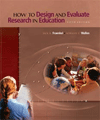Jack R. Fraenkel,
San Francisco State University
Norman E. Wallen,
San Francisco State University
| Hawthorne effect | A positive effect of an intervention resulting from the subjects' knowledge that they are involved in a study or their feeling that they are in some way receiving "special" attention.
|
 |
 |
 |
| History threat | The possibility that results are due to an event that is not part of an intervention, but which may affect performance on the dependent variable, thereby affecting internal validity.
|
 |
 |
 |
| Implementation threat | The possibility that results are due to variations in the implementation of the treatment in an intervention study, thereby affecting internal validity.
|
 |
 |
 |
| Instrumentation threat | The possibility that results are due to variations in the way data are collected, thereby affecting internal validity.
|
 |
 |
 |
| Instrument decay | Changes in instrumentation over time that may affect the internal validity of a study.
|
 |
 |
 |
| Internal validity | The degree to which observed differences on the dependent variable are directly related to the independent variable, not to some other (uncontrollable) variable.
|
 |
 |
 |
| Location threat | The possibility that results are due to characteristics of the setting or location in which a study is conducted, thereby producing a threat to internal validity.
|
 |
 |
 |
| Maturation threat | The possibility that results are due to changes that occur in subjects as a direct result of the passage of time and that may affect their performance on the dependent variable, thereby affecting internal validity.
|
 |
 |
 |
| Mortality threat | The possibility that results are due to the fact that subjects who are for whatever reason "lost" to a study may differ from those who remain so that their absence has an important effect on the results of the study.
|
 |
 |
 |
| Regression threat | The possibility that results are due to a tendency for groups, selected on the basis of extreme scores, to regress toward a more average score on subsequent measurements, regardless of the experimental treatment.
|
 |
 |
 |
| Subject characteristics threat | The possibility that characteristics of the subjects in a study may account for observed relationships, thereby producing a threat to internal validity.
|
 |
 |
 |
| Testing threat | A threat to internal validity that refers to improved scores on a posttest that are a result of subjects having taken a pretest.
|



 2003 McGraw-Hill Higher Education
2003 McGraw-Hill Higher Education